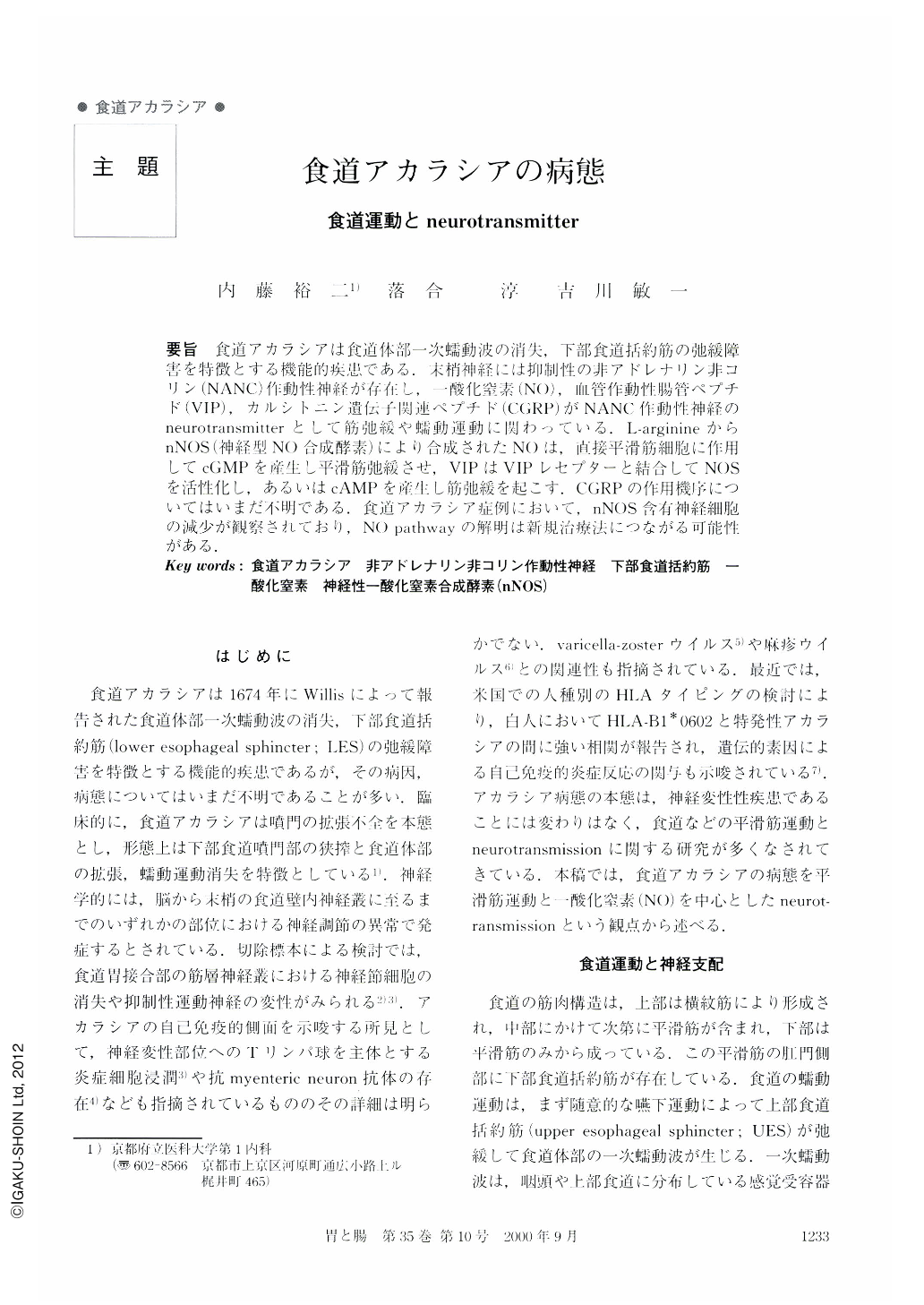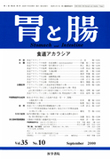Japanese
English
- 有料閲覧
- Abstract 文献概要
- 1ページ目 Look Inside
要旨 食道アカラシアは食道体部一次蠕動波の消失,下部食道括約筋の弛緩障害を特徴とする機能的疾患である.末梢神経には抑制性の非アドレナリン非コリン(NANC)作動性神経が存在し,一酸化窒素(NO),血管作動性腸管ペプチド(VIP),カルシトニン遺伝子関連ペプチド(CGRP)がNANC作動性神経のneurotransmitterとして筋弛緩や蠕動運動に関わっている.L-arginineからnNOS(神経型NO合成酵素)により合成されたNOは,直接平滑筋細胞に作用してcGMPを産生し平滑筋弛緩させ,VIPはVIPレセプターと結合してNOSを活性化し,あるいはcAMPを産生し筋弛緩を起こす.CGRPの作用機序についてはいまだ不明である.食道アカラシア症例において,nNOS含有神経細胞の減少が観察されており,NO pathwayの解明は新規治療法につながる可能性がある.
The pathogenic mechanisms underlying motor dysfunction in achalasia are primarily related to an impairment of the neural network. Esophageal achalasia is charaterized by the loss of inhibitory neurones in the distal esophagus. Typical manometric findings in achalasia include both an abnormal relaxation pattern of the lower esophagus sphincter (LES) and disturbed esophageal peristalsis. Nitric oxide (NO) and vasoactive intestinal polypeptide (VIP) are proposed as neurotransmitters that control LES relaxation and esophageal peristalsis. Both NO and VIP can be released from esophageal non-adrenergic non-cholinergic nerves with appropriate stimulus, and neuronal NO synthase (nNOS) and VIP are found in myenteric neurous that innervate the circular smooth muscle of the esophagus. Recent study using nNOS knockout mice showed that nNOS rather than eNOS is the sourse of NO that is responsible for electrical field stimulation-induced LES relaxation and rebound contraction. Many reports indicate that NO decrease or absence is considered responsible for the typical motor alterations of achalasia. NO donors that directly supply exogenous NO or sildenafil that blocks phosphodiesterase type 5 which destroys cGMP, may be useful for medical therapy of esophageal achalasia.

Copyright © 2000, Igaku-Shoin Ltd. All rights reserved.


